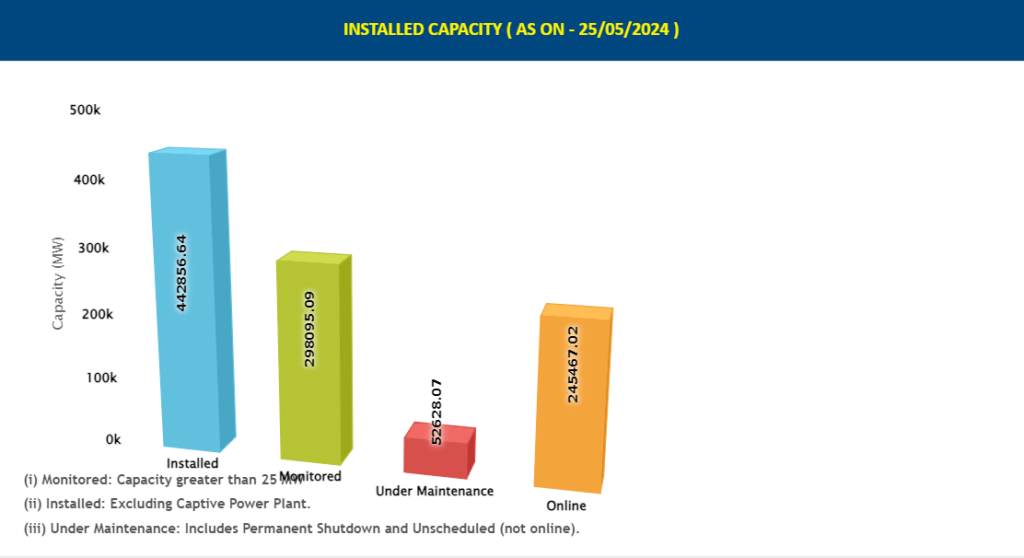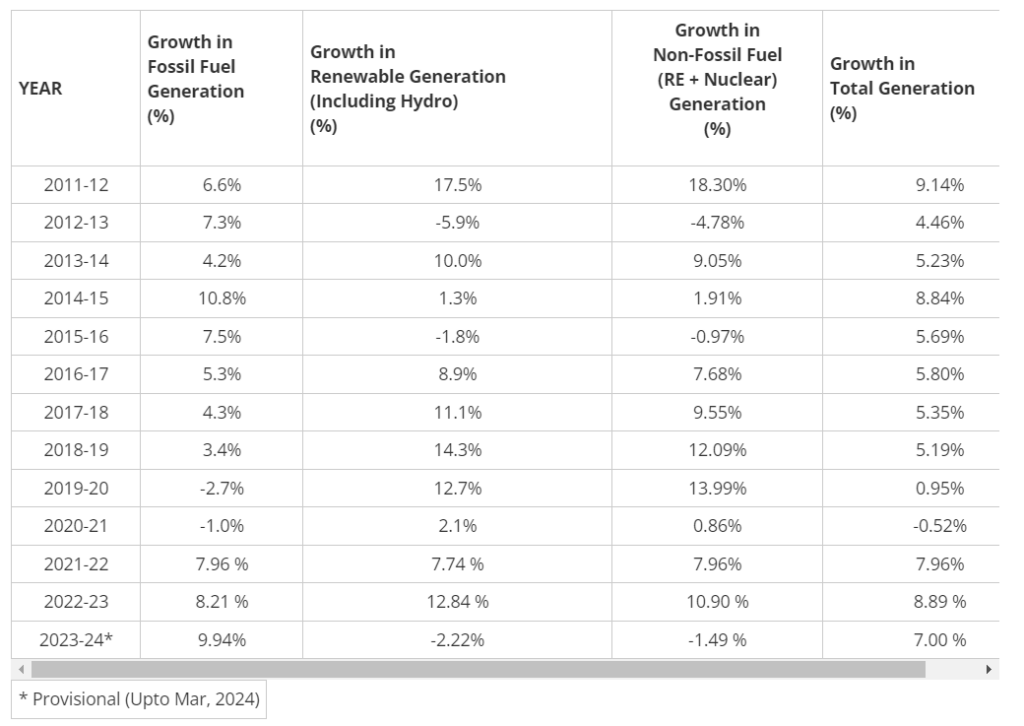(Part 1 of this series summarised the increase in power demand due to soaring temperatures. Part 2 is a round up of power outages across the country and possible solutions to the problem)
Cities in the dark across India
High demand for power in the Kalwa circuit of Maharashtra State Electricity Transmission Co. Ltd. (Mahatransco), primarily due to the scorching heat, led to overloading and a disruption of electricity supply for up to two hours in April. The regions affected included Naupada, Pachpakhadi, Vikas Complex, Majiwada, Talao Pali, Colorchem, Temghar, Kalwa etc. in Thane as well as Vashi and Mahape in Navi Mumbai.
After a demand surge of 3,900 megawatts in Mumbai, the load trimming scheme was put into effect by Mahatransco due to overloading in the same month. This impacted several substations in the Mumbai Metropolitan Region as load relief had to be provided. Milind Awatade, public relations officer of Mahatransco told Hindustan Times, “We had to regulate 160 MW of electricity in Thane, Kalwa, Vashi, Colorchem, Mahape and Temghar area due to excessive load.”
Pune also witnessed frequent and prolonged power cuts this summer. The transmission company is using an automatic load management system ‘LTS’ (Load Trimming Scheme) system to avoid possible dangers and failures in the transmission system. The power supply had to be shut down in some places. Along with this, unseasonal stormy rain and hail are also affecting the transmission and distribution system.
Kashmir plunged into a power crisis with massive outages after the administration said it could not acquire additional power. The power department said that curtailments will increase for “high loss” areas as procuring more power calls for funds. People across the Kashmir valley witnessed 10-15 hours of power cuts every day in February which has increased from 4.5 to 8 hours in both metered and non-metered areas.
In Ardee City, Gurgaon, power was disrupted for about 16 hours in the first week of May. Residents reported that the outages were due to the bursting of power cables and short circuits in meter panels at several areas in the colony. Other parts of Gurgaon also witnessed frequent power outages this summer.

Several localities in Chennai have been witnessing sporadic power cuts, voltage fluctuations, and short circuits. Residents of Velachery, Medavakkam, Taramani, and nearby areas have complained of such disruptions, making their nights miserable.
Read more: 42 degrees and no electricity: Chennai looks for a solution to power cuts
Anand Wagh, Fellow and Head for Center for Renewable Energy at World Institute of Sustainable Energy (WISE), specifies that load shedding is done on a cyclic basis to ensure grid stability, when increased power demand imbalances the grid. He also observes that if the monsoons are delayed, power outages could continue well into June 2024.
AC sales in India expected to rise about 30-40% in April-June quarter
Calcutta Electric Supply Corporation (CESC) reveals that between March 1st and April 15th, Kolkata’s primary power supplier has only received 34,850 applications for new AC connections. On the contrary, estimates suggest that 1.5 lakh ACs were purchased during this period, which means that 80% of ACs are being used without official sanction.
CESC does not have a problem with people buying ACs during summer, but when people install ACs without getting the necessary permits, they overload the local power grid and lead to automatic shutdowns, or even day-long power cuts.
Bengaluru saw some unprecedented high temperatures in March-April temperatures and ACs are no longer a luxury product. In April 2023, the peak load and consumption within Bangalore Electricity Supply Company Limited (BESCOM) limits had reached 7,800 MW, escalating to 8,381 MW by April 2024. Similarly, peak consumption rose from 7,740 MW in March 2023 to 8,232 MW in March 2024.
Improved purchasing power and cheaper options are leading to high demand. Onida saw a whopping 283% year-on-year jump in air conditioner sales across Karnataka in the March quarter.
Bengaluru is not only witnessing spikes in sales of air conditioners and coolers, but also a surge in demand for rental ACs. While AC rental trends have existed for many years in other cities, it is gaining popularity in Bengaluru now. Start-ups such as Rentomojo, Cityfurnish, and Furlenco offer ACs for rent. These start-ups collaborate with AC manufacturers and purchase units in bulk, partner with logistics firms such as Porter for delivery to households and offices. There are also tie-ups with home service firms like Urban Company for installation and maintenance. They charge an average monthly rent of Rs 1,500 – Rs 2,000.
Read more: What’s behind Delhi’s crazy electricity demand this summer? (2018)
Air conditioner vendors are worried they might face an inventory shortage and shortage in models and products this year due to the unprecedented demand. Nilesh Gupta, Director, Vijay Sales, the retailing chain with a pan-India presence told Deccan Herald that year-on-year growth in AC sales was between 8-9% in the January-March quarter and that South India has surpassed the north this summer.
With sales now picking up in the North, the shortage is expected to get worse. As per executives, the industry is going to face a national sales loss of around Rs 1,200-1,500 crore of potential business. Although sales may have peaked in April, the industry is expected to grow by 30-40% in the April-June quarter.

Complexity of power distribution in India
The Ministry of Power has observed that the electricity market in India faces significant challenges, with integration of renewable energy appearing difficult. Distribution companies (DISCOMs) are unable to incorporate high levels of renewables in power exchanges because of the integration challenges
In addition, DISCOMs have limited participation in power exchanges (integration of renewables) due to long-term contracts. The long-term contracts are generally for a period of over 25 years and cannot be terminated before the end of the contract. This implies that the DISCOMs have to ascertain the demand projections and other factors for 25 years in advance before signing the Power Purchase Agreements (PPA) with the generators. So, it is difficult to bring in a mix of renewables within this window, based on developments in the industry.

“It’s a chicken and egg situation. The ideal way is to enter into short term contracts, but by doing so the project viability gets really hampered, as cost of financing goes up and it later hampers the pipeline of projects that become operationalised,” explains Vibhuti Garg, Director, South Asia, at Institute for Energy Economics and Financial Analysis (IEEFA), “The legacy contracts entered into by the distribution companies provides investors with certainty, but obstructs the discoms from buying cheaper power and taking advantage of improved technology and solutions which short term contracts could offer.”
“When we have resources to develop more flexible generation sources, like pumped hydro and battery storage, we will be in a better situation to meet demand from clean energy sources,” adds Vibhuti.
“Battery storage should be promoted on a large-scale basis, so that when we have surplus generation, it can be used during hours of shortage,” emphasises Anand Wagh. “Storage can help in not only storing excess energy from solar and wind, but also help in mitigating peak demand variations,” says Sandhya Sundararagavan, Head of Energy Transition at World Resources Institute (WRI).
There is a flip side of it though. Speaking about the concerns around battery manufacturing, Vivek Gilani, Founder and Director of C Balance Solutions Hub points out that it requires rare earth metals, which entails extensive mining. “The mining of these rare earth metals involve extreme exploitation of women and children across the world. We will never have enough battery storage, if we don’t control the amount of energy. It is important to understand the interconnections here. The crux of the policy cannot be battery production,” he highlights.
What is the government doing?
“Electricity markets can help the states in clean energy transition efforts. Re-evaluating existing power purchase agreement structures, exploring new PPA designs and coordinated resource adequacy planning at state and national levels could help in mitigating supply-demand imbalances,” says Sandhya.
In their attempts to ensure peak demands are met, the Ministry of Power has mandated that all power DISCOMs shall undertake a resource adequacy plan (RAP) for a 10-year horizon, known as long-term Distribution Licensee Resource Adequacy Plan (LT-DRAP). This is designed to meet their own peak and electrical energy requirement.
The DISCOMs through their long-term resource adequacy plan can demonstrate their plan to meet the peak demand and energy requirements with a mix of long-term, medium-term and short-term contracts, including power exchanges, to the state electricity regulatory commission or the joint electricity regulatory commission.
In order to help meet the high electricity demand in the country, the Centre has decided to operationalise gas-based power plants. A significant portion of the capacity of Gas-Based Generating Stations (GBS) is currently unutilised, primarily due to commercial considerations. The order under Section 11 of the Electricity Act, 2003 aims to optimise the availability of power from Gas-Based Generating Stations during the high demand period.
“Our general policies are all directed towards increasing generation, but we firstly need to be energy efficient and implement energy rationing to increase nega watts,” says Vivek. The term nega watt, coined by Amory Lovins, Chief Scientist at the Rocky Mountain Institute, refers to a watt of energy that one has not used, through energy conservation or the use of energy-efficient products. The main goal, Vivek indicates, should be to reduce demand, and then focus on energy generation.
“Serving this never-ending need for power by just doing it through renewable energy is not a viable solution, we need to control the amount of power that we actually need,” he emphasises, even suggesting that every resident should have a power consumption cap so that there is equitable distribution of power.
Other measures to meet summer electricity demand
The government has proposed the following measures to meet the summer demand, apart from the decision on gas-based generating stations:
- Planned maintenance of power plants to be shifted to monsoon season
- New capacity additions to be speeded up
- Partial outages of Thermal Power Plants being brought down
- Surplus power with captive generating stations to be utilised
- Surplus power to be offered for sale in energy exchange
- Directions for imported-coal-based power plants, to make full capacity available for generation
- Shifting of hydro power generation to peak hours
- Advance planning by all stakeholders to ensure coal availability
Source: Ministry of Power